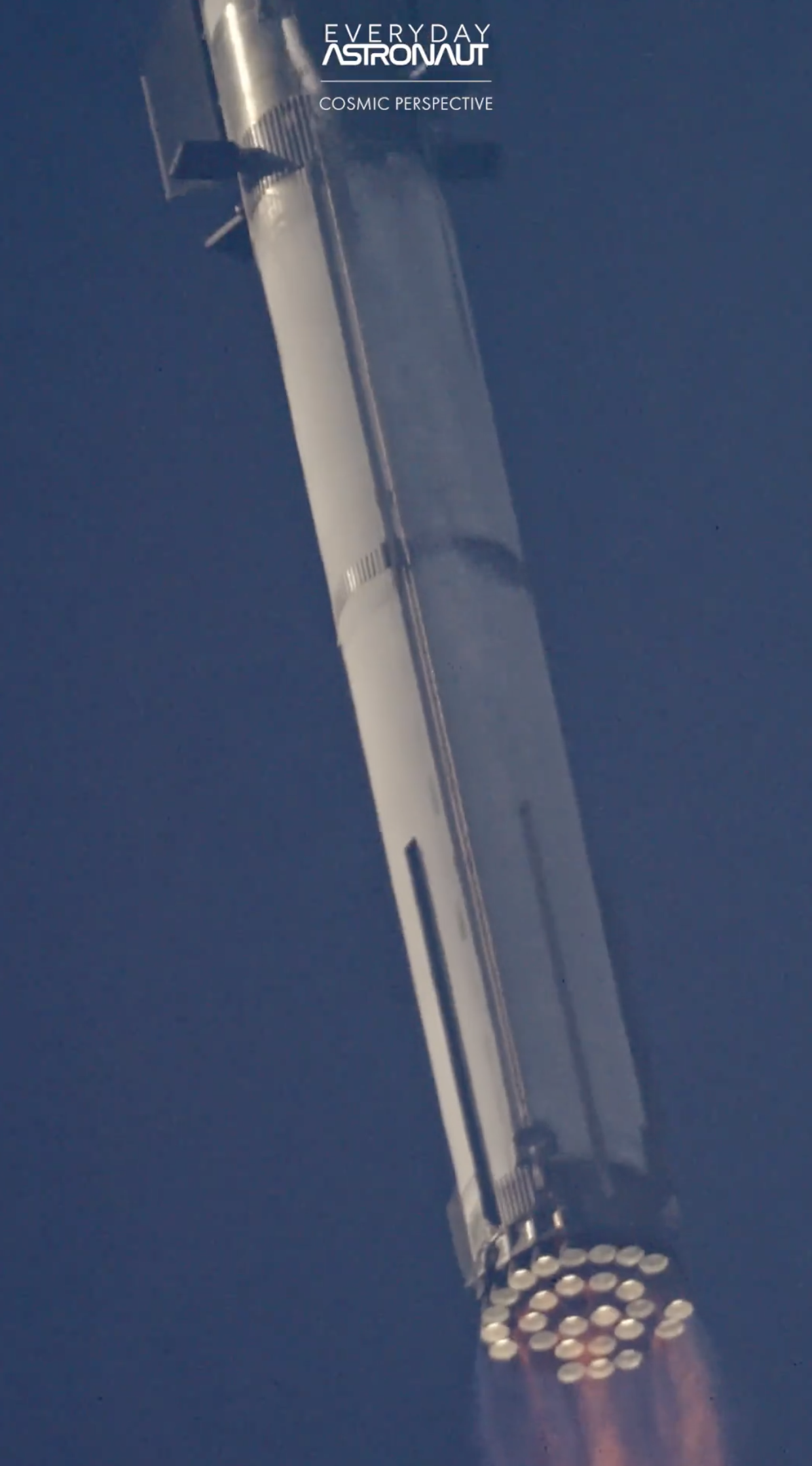The Reason SpaceX's Starship Had To Be Destroyed
There were dozens of video cameras running during the launch of SpaceX’s Starship. These have provided rich engineering data that allows an explanation of why the rocket failed to achieve orbit and had to be destroyed.
All the analyses of the launch failure focus on this picture showing what the concrete launch pad directly underneath the booster looked like after the smoke cleared.
The enormous downward thrust and heat of the Super-Heavy’s engines (firing at full thrust for the first time) dug a hole into the top surface of the hardened concrete launchpad. This allowed extreme-pressure hot gases to penetrate the heavy concrete structure and blew it violently apart and upward. Pieces litter the entire launch complex, with serious damaged to on-site tanks and technical equipment.
Although previous test firings had not visibly damaged the concrete surface, their extreme heat might have weakened it. The forces of a full scale, 100% thrust, launch were clearly under-estimated.
This frame of the official SpaceX launch video hints at just how much debris was ejected upward against the launch vehicle itself. The particular dark block between the arrowheads, racing along faster than the rising rocket, has been variously described as the size of large couch or small car. Many similar projectiles can be seen flying in other videos. After the launch there were chunks too heavy to lift all around the pad and surrounding work areas. They littered the public highway and beach. Some videos even show them splashing into the Gulf of Mexico.
Another tell-tale sign that this launch was going differently from all previous launches was the color of the exhaust cloud. Mixed with the rocket exhaust this time was pulverized concrete and sand.
At the moment of launch, the rocket’s 33 rocket engines were just 15 meters above the original launchpad level and it was inevitable that some of them would be directly hit by flying debris.
This accounts for an adjacent pair that never lighted up and four more that eventually stopped firing. SpaceX designs their rockets with multiple engines so that one or two can misfire and the mission can continue. However, the Super-Heavy booster cannot handle this many engine outages. This is a view of the rocket’s engines looking straight up at it’s tail as it was still trying to achieve the targeted altitude.
Amazingly the rocket rose above the ruined pad, cleared its valuable launch tower, and flew normally along its planned trajectory for several minutes. It finally lost the ability to control its flight because of key engine failures and began to tumble back through the atmosphere to Earth.
Range Flight Safety Officers then pushed the red button to end this “Test Flight."










